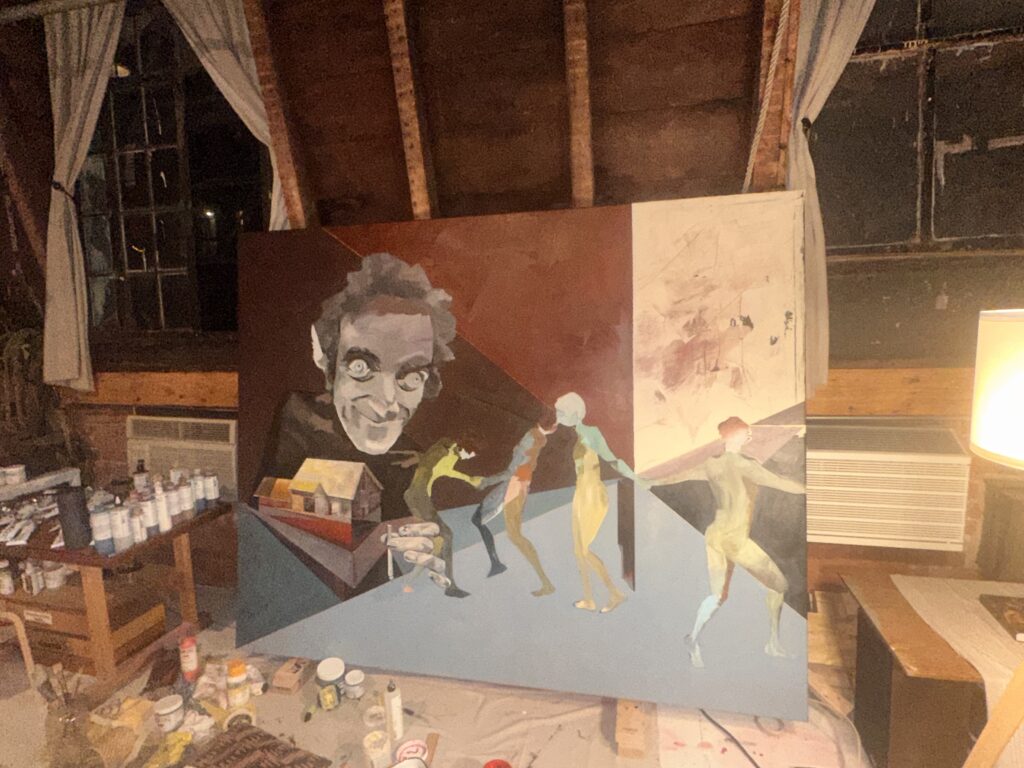
To understand what has happened to art since the Romantic period, one quote by Kandinsky has helped me define the parameters with which I’m thinking about this question. In his discussion of form, Kandinsky argues that when a creative spirit is fertilized and ripe it attempts to create a new value in the human spirit. If the conditions are right within the human spirit, the human will find a material form that expresses the new value. When a new value has materialized it is received with hostility and “the human being who carries the value is pictured as ridiculous and dishonest. The new value is laughed at and abused. That is the misery of life. The joy of life is the irresistible, constant new victory of the new value. This victory proceeds slowly. The new value conquers the people quite gradually. And when it becomes undoubtedly in many eyes, this value, which was absolutely necessary today, will be turned into a wall – a wall which is erected against tomorrow. The changing of the new value (of the fruit of freedom) into a petrified form (a wall against freedom) is the work of the black hand.” (Kandinsky as cited in Chipp, 156)

In essence, Kandinsky is describing an objective historical pattern in Western art whereby new movements emerge in direct rebellion against their predecessors. With that said Kandinsky’s explanation of artistic evolution presupposes a belief in the teleological narrative of progress toward human freedom. For now, I am going to avoid exploring the question of freedom as an evolutionary goal, but I believe it may become important later in my research. Nevertheless, if we ascribe to Kandinsky’s theory, one might assume that once the values of the Romantics settled in Western consciousness and the metaphorical wall was erected, it was shortly crushed and rebuilt over and over again with new forms such as realism, impressionism, post-impressionism, fauvism, expressionism, cubism, surrealism, abstract expressionism, pop art, conceptual art, and contemporary art – to name a few.

The Romantic period may seem like a relic of the past which the Western art world has outgrown. Yet, if we look closely at Kandinsky’s theory, there is a distinction between a form, many of which undeniably emerged after the Romantic period, and a value. Kandinsky argues that new values can only materialize when the human spirit is fertile: “The veiling of the spirit in the material is often so dense that there are generally few people who can see through to the spirit. Thus, especially today, many do not see the spirit in religion and in art. There are whole epochs which disavow the spirit, since the eyes of the people, generally at such times, cannot see the spirit. It was so in the nineteenth century and is on the whole, still today.” (Kandinsky as cited in Chipp, 155) If we accept that art is more than a purely aesthetic endeavor, then the emergence of new forms like the impressionist style doesn’t necessarily signify the rupture and crumbling of the wall erected by Monet’s predecessors. This is precisely the question of my research. Art after the Romantic period has undoubtedly experimented with and expanded the boundaries of aesthetic form, but have any of these movements transformed human consciousness?

*Because the paintings i’m showing you are in process, i’m having a hard time writing about them.